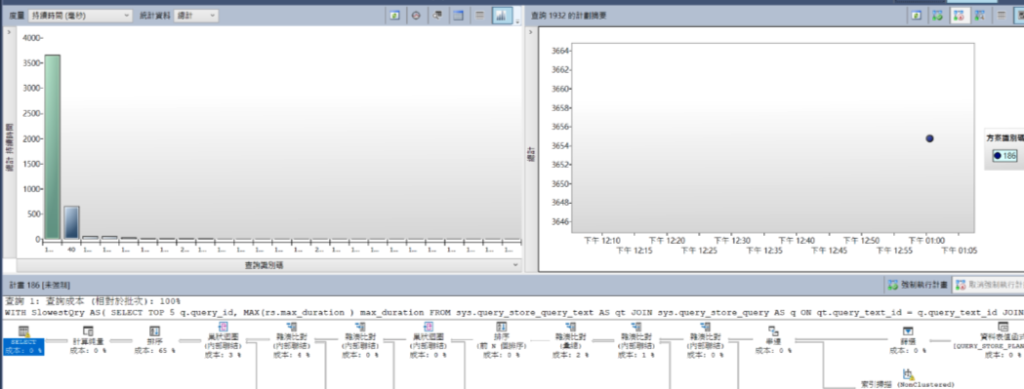Who is ZhouShen
第一次看到他也是從2014年初登場中國好聲音第3季,一直以來,我都會多多少少觀注一下素人選秀節目 ,從台灣的星光大道,超偶,到後來大放異彩的中國選秀節目。其實那時聽到這首歌的時候,對他的聲音覺得特別,雖然有歡顏與貝加爾湖畔的比賽作品,但我其實就僅僅是有印象而已
初登場: 歡顏
第二首-貝加爾湖畔 (被那英淘汰的名場面)
真的對他驚豔的就是這個大魚美聲合唱版,以前有聽音樂劇跟世界三大男高音,其實我對這種美聲唱法就是有愛好~,所以我就開始 密切關注他,這時的他也默默已經有一些作品了。(動畫-大魚主題曲)
中國好聲音幫唱版本 ,唱到陳奕迅 都稱讚
因為周深是烏克蘭音樂學院畢業的,以致於後來看到多首他的美聲的作品時 ,他的技巧也愈發成熟
以這兩首為例(2019~2020年左右)
歌劇魅影 – Think of Me
貓- Memory
他把握住了每一個的舞台,因為他都做好了最萬全的準備,展現了他絕佳的控制力 ,嗓音條件。
恰恰符合我對跨界美聲的審美,同時又具備有獨特性,在那時看來,根本就是一個鑽石(他勵志的故事又是另一段故事了)
他曾經說過,他特別珍惜並全力準備每一個表演的機會,因為他唯有這樣,才有機會有”下一個舞台”
有2020~2024年 ,幾乎可以看到他不斷的出現在各大晚會與典禮,也有無數的歌讓他唱,甚至一度戲稱勞動楷模
也是因為這樣,他開始被很多人聽到
香港明星們對周深的評價
那時因為幾個音綜開始嶄露頭角,我們的歌與他一起參演的周華健也 把對他的讚賞,帶到台灣,
連知名電台主持人光禹都開始挖起他的礦(看看下面的歌單就知道這個坑的深度),做了寶藏週記 一做也好幾年了
而其實這幾年 來周深的成長,從YOUTUBE的作品、能見度,都可以看的出來,他本身也很努力,他曾經說過 ,剛開始很多人對他的評價是∶「原來周深是一個男孩子,唱是唱的不錯,但若是做為一個女孩子,就顯著普通了」,他覺得很多人因為這樣 否定了他在音樂上下的努力。
然而他不畏酸言酸語,繼續憑實力與求新求變的勇氣,讓自己始終能保持,這是一個特別是他從不自信的轉變過來的,看著他就像自己的孩子一樣成長起來。
跟貝加爾湖畔 原唱 李健老師合作了一個即興舞台
出道十年 專訪,可以見得,他是一個心思非常細膩且正向的一個人
早期辛酸的經歷
如今的維基百科寫道 : 周深是一位備受讚譽的中國男歌手,以其清亮溫柔的嗓音和多變的演唱風格著稱。自2014年參加《中國好聲音》第三季正式出道以來,他在音樂領域取得了眾多成就,以下是他的一些重要榮譽與貢獻:
🎤 音樂成就與代表作品
* 代表歌曲:《大魚》、《燈火裡的中國》、《小美滿》、《和光同塵》、《花開忘憂》等,這些作品展現了他在流行、古風、電子等多種音樂風格中的出色表現。
* 專輯發行:截至目前,周深已發行兩張錄音室專輯:《深的深》和《反深代詞》,並發表超過200首單曲。
銷售成績與認證
-
首日銷售額:專輯發行首日即創下2500萬元人民幣的銷售額。
-
首週銷售額:首週銷售額突破3000萬元人民幣。
-
累計銷量:截至2024年12月,專輯累計銷量超過167萬張,銷售額突破5900萬元人民幣,成為2024年中國內地專輯銷量冠軍。
-
平台認證:《反深代詞》是2024年QQ音樂平台上首張也是唯一一張獲得“史詩唱片”認證的專輯。
🌍 國際成就
-
IFPI全球專輯銷量榜:該專輯在2024年IFPI全球專輯銷量榜中排名第11位,是當年唯一上榜的華語專輯。
-
單曲認證:專輯中的4首歌曲獲得雙白金認證,1首獲得白金認證,7首獲得黃金認證,累計認證單位達1250萬。
以他的成長期,以我認識他的部分,我將 時間軸分類如下
* 前期(中國好聲音2014+首張專輯,少數翻唱) 2014~2018
* 中期 (2019~2022)
主要是靠默默累績曝光(OST大量累積超過100首,其中包含成名曲大魚)
另一個部分是音綜累積 作品期( 各種 合作舞台 ,翻唱創作 – 留下yt作品)
註: 他在跑男也很活躍,所以在中國很出圈~
* 現在 (2023~now)
大鳴大放期(各種音樂獎、邀約、晚會演出,國內外巡迴)
* 以上年限就我印象,不用太在意
另外以音樂風格作品,又可于分成
中國風(曲調本身京有中國風,或加入戲腔),因為本著仙嗓天賦,通常效果拉滿,方文山都認證
一般流行(翻唱 or ost現代劇) 就看歌順不順耳就好
跨界(融合美聲唱法) -> 我特別有興趣的
以出處來分的話,以下歌單大部分就是很單純的分法,沒有排名,大部分絕得要嘛是順耳,不然就是覺得 是值得一再品味的現場或錄音室 作品~
一看到JJ找他當佳賓,也算原了周深偶像的一個夢想,他們同台飆唱 真的滿感動的~因為這也是看到他被前輩認可了
JJ + 周深 《裹着心的光》 (JJ北京演唱會)
各大音綜時期
蒙面唱將猜猜猜
《雪落下的声音》
雪落下的聲音
《我真的受伤了》
杨丞琳、周深
《她说》
《我是真的爱你》李宗盛
聲入人心 我很愛聽音樂劇,這完美 發揮了他美聲
莎拉布萊曼 《Time to say goodbye》
貓- Memory
歌劇魅影 – Think of Me
Version 2
周深 王晰 月彎彎 二重唱
合作舞台 (他唱合音超強,超like他的二創加分作品)
天賜的聲音- 周深-張韶涵 – 一路生花
周深GAI周延合唱《玫瑰少年》 (原唱: 五月天or蔡依林)
我們的歌
周深 李克勤 – 張國榮 (追 )
周深 李克勤 – 《月半小夜曲》
周深 李克勤 – 《天下有情人《我是真的爱你》》
時光音樂會- 梁詠琪 – 花火
時光音樂會- 阿杜 – Andy
時光音樂會- 周杰倫 – 聽見下雨的聲音
時光音樂會- 月光(原唱 : 胡彥斌 轉音一絕)
原唱王菲 – 如願
五月天- 好好
起風了
《歌手·当打之年》Singer 2020
歌手 – 達拉崩吧 (獵奇)
無問 – 原唱:毛不易
《自己按门铃自己听》
《大鱼》
声生不息·家年华- 周深 汪蘇瀧 愛的供養 (原: 楊冪)
声生不息·家年华- 周深 黃綺珊 歲月 (原: 王菲)
声生不息·家年华- 周深 宋亞軒 桃花諾 (原: 鄧紫琪)
声生不息·家年华- 周深 陳楚生 逆光(原 : 孫燕姿)
舞台 2023 朴仔範、王嘉爾、Ella供他清唱大眠名場面
音樂緣計劃(新歌很多)
沉默的羔羊
合作版
薛之谦&周深《只字不提》
周深&周笔畅《孤独音乐家》
二次元作品+翻唱 (他出圈前,在中國二次元界已經爆紅)
《Rubia》——《崩壞3rd》印象曲
《Unravel》 – 原唱 TK from 凛として時雨
迪士尼合作作品
《奇遇乐章》
星願 I’m a Star
20201224周深Charlie Zhou Shen 九语版《Let It Go》
OST電視原聲帶(古風劇)
《蒼蘭訣》-《餘情》
慶餘年 2-借過一下
《願得一心人》(電視劇鶴唳華亭主題曲)
《願》(電視劇錦衣之下主題曲)
《若夢》(電視劇 夢醒長安 主題曲)
陳情令《荒城渡》
周深 + 鄭雲龍 -《曇花一現雨及時》(電視劇三千鴉殺主題曲)
《明月傳說》(電視劇 風起霓裳 主題曲)
Sword and Fairy《祈今朝》 | 《共鸣》
【長歌行 The Long Ballad OST電視劇片尾主題曲】
《相擁不放》(無損音樂連歌詞)(《白月梵星》影視劇主題曲)
一晌 (電視劇《狐妖小紅娘月紅篇 Fox Spirit Matchmaker: Red-Moon Pact》片尾曲)
曼陀 (《淮水竹亭》影视剧主题曲/片尾曲
以上…太多了,遺珠之憾應該還有超過10首
OST電影原聲帶
《水形物語-奧斯卡金像獎最佳影片》(電影水形物語同名推廣曲)
《問花》(電影 白蛇2:青蛇劫起 主題曲)
張藝謀 – 《懸崖之上》(電影 懸崖之上 同名主題曲)
《來不及勇敢》(電影昨日青空青春告白曲)
《小美滿》【熱辣滾燙 YOLO OST 電影熱辣陪伴曲】
電影《解密》中文版同名主題曲
《流浪地球2》定义主题曲《人是_》
OST電視原聲帶(現代劇主題區)
《消散人潮》【北上 Northward OST 電視劇片尾曲
《雲邊的風箏》(又名《我們的王鶯鶯》
《风吹过的晨曦》(玫瑰的故事情感主题曲)
《幸福的故事》幸福裡
人世間-光字片
生活總該迎著光亮 (電視劇《喬家的兒女》主題曲)
過客 (《以愛為營》電視劇主題曲)
全英文歌
周深《避難所 Sanctuary》(英語單曲)
《My Only》(電視劇 開端 片尾主題曲)
還有滿多現場 作品是英文歌
戲腔風格
周杰倫 – 《蘭亭序》
《易燃易爆炸》
光亮 – 記錄片或實境節目 主題區
手遊作品: 江湖3系列 第一部: 江湖緣起
第二部: 江湖覓知音
第三部: 《我,江湖》《一梦江湖》
藝術歌曲 或合作舞台聯合國表演 – 《和平頌》
其他現場or翻唱 作品
鐵達尼號 My heart will go on (席琳迪翁)
雪落下的聲音(神翻唱)
《 問世間情是何物》 ( 詞:元好問 • 金朝)
Unstoppable (原唱: SIA)
Fire
身騎白馬(原唱: 徐佳瑩)
《天堂島之歌》
周深萨顶顶《左手指月》
Zhou Shen/周深《與你同在》【い つ も 何 度 で も】[《千與千尋》主題曲日文版]
自創曲-虛構 現場晚會首唱
齐豫+周深 合唱《欢颜》 2024-2025跨年
《我用所有报答爱》 – 譚盾 交響樂團
《浮光》
《我以渺小爱你》
《花开忘忧》
《卧龙吟》
首張專輯 周深 Charlie Zhou【深的深】 全分享(10首歌)
時隔七年,第二張個人專輯 反深代詞https://youtube.com/playlist?list=PLrlBqwsy1XpTJSap7VwatCdz6Fh0eUIYM&si=4rb5CSCdYfR12OEq













